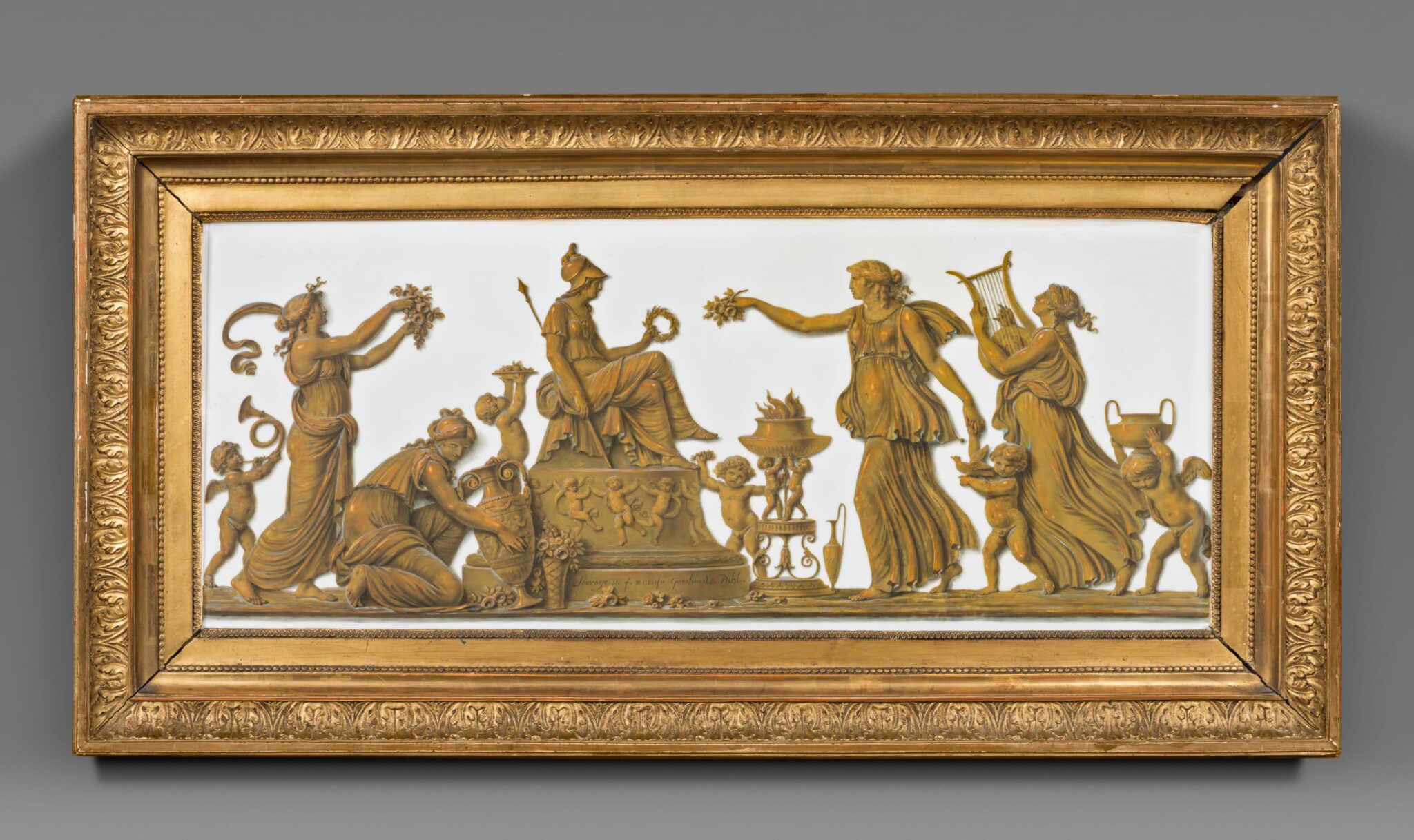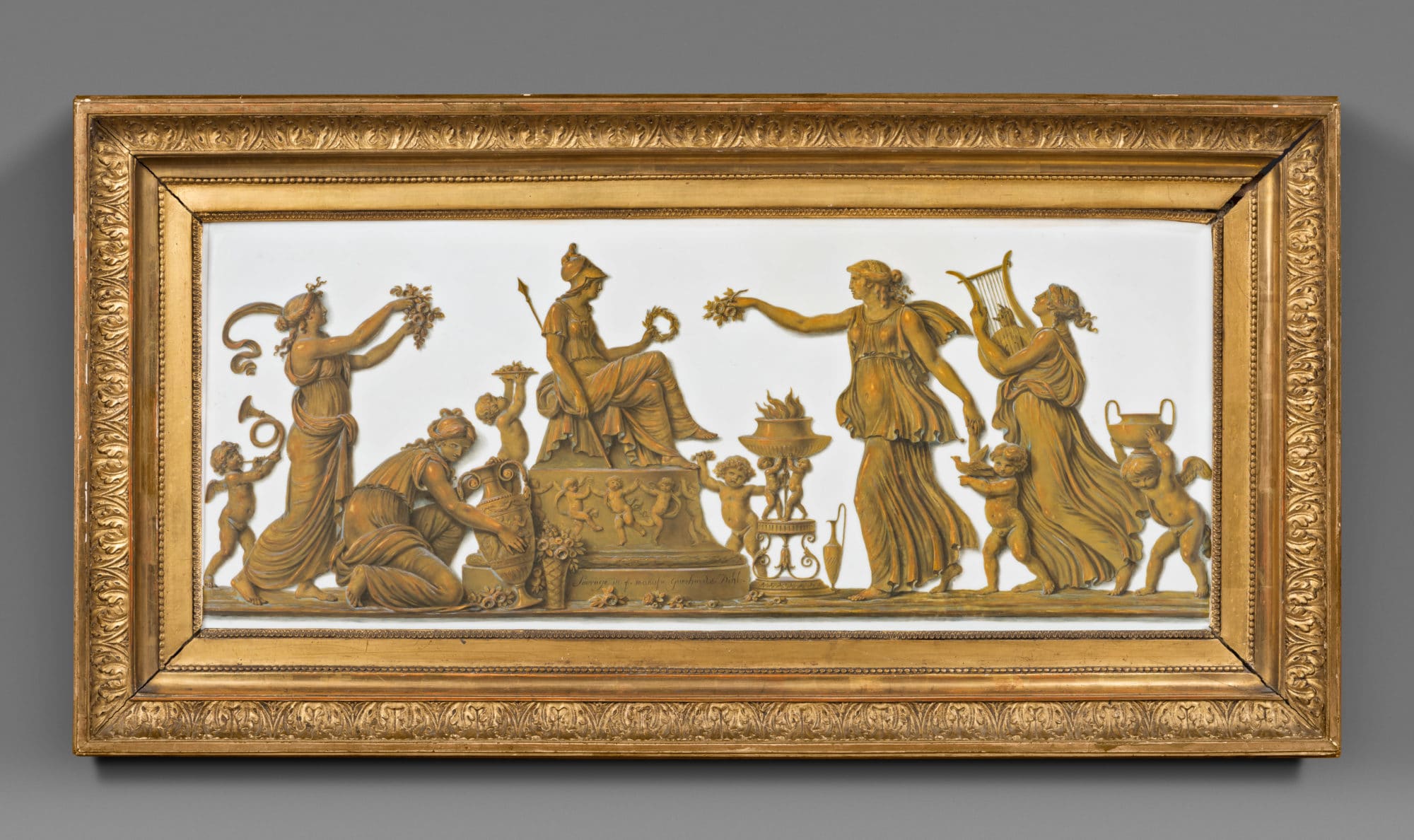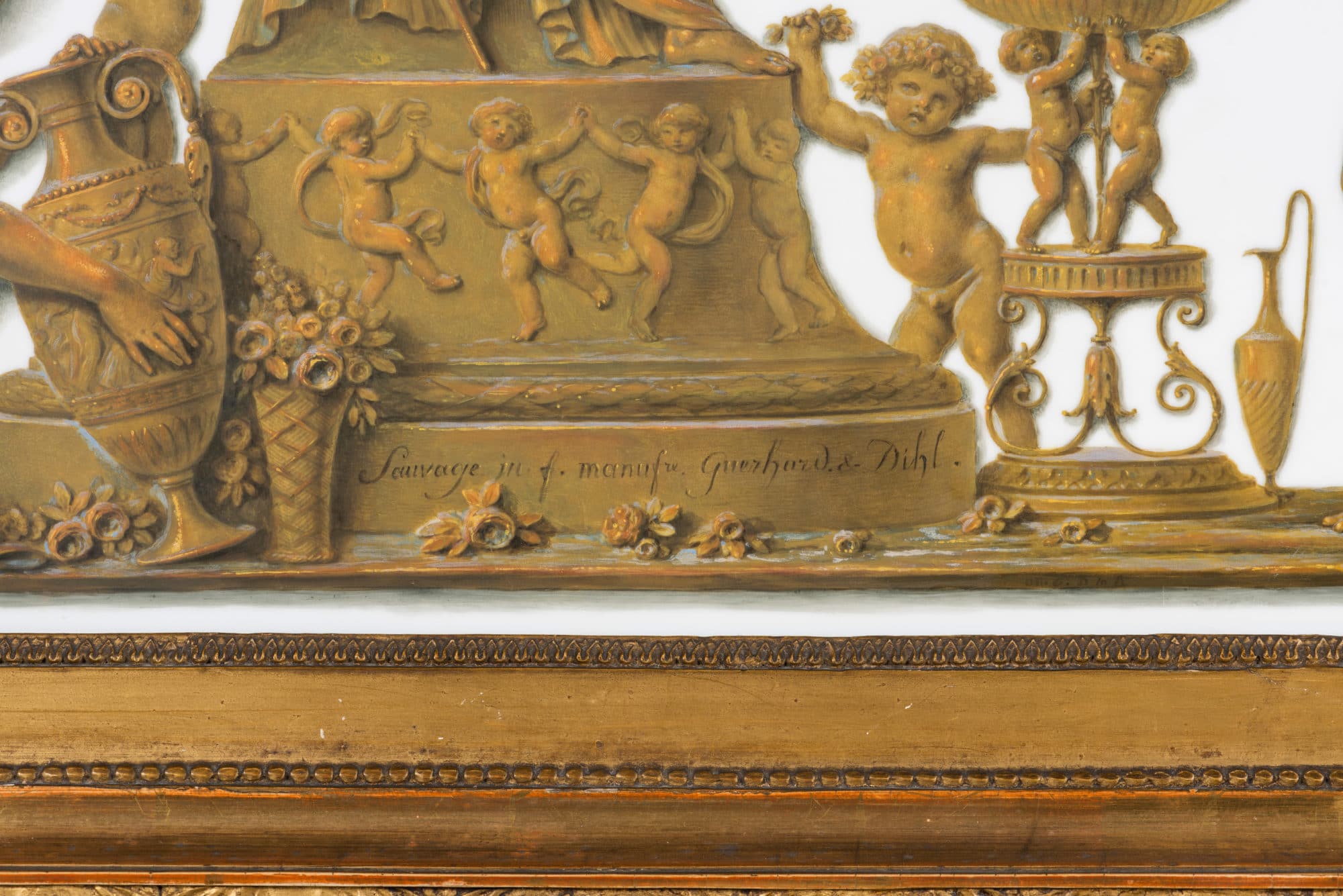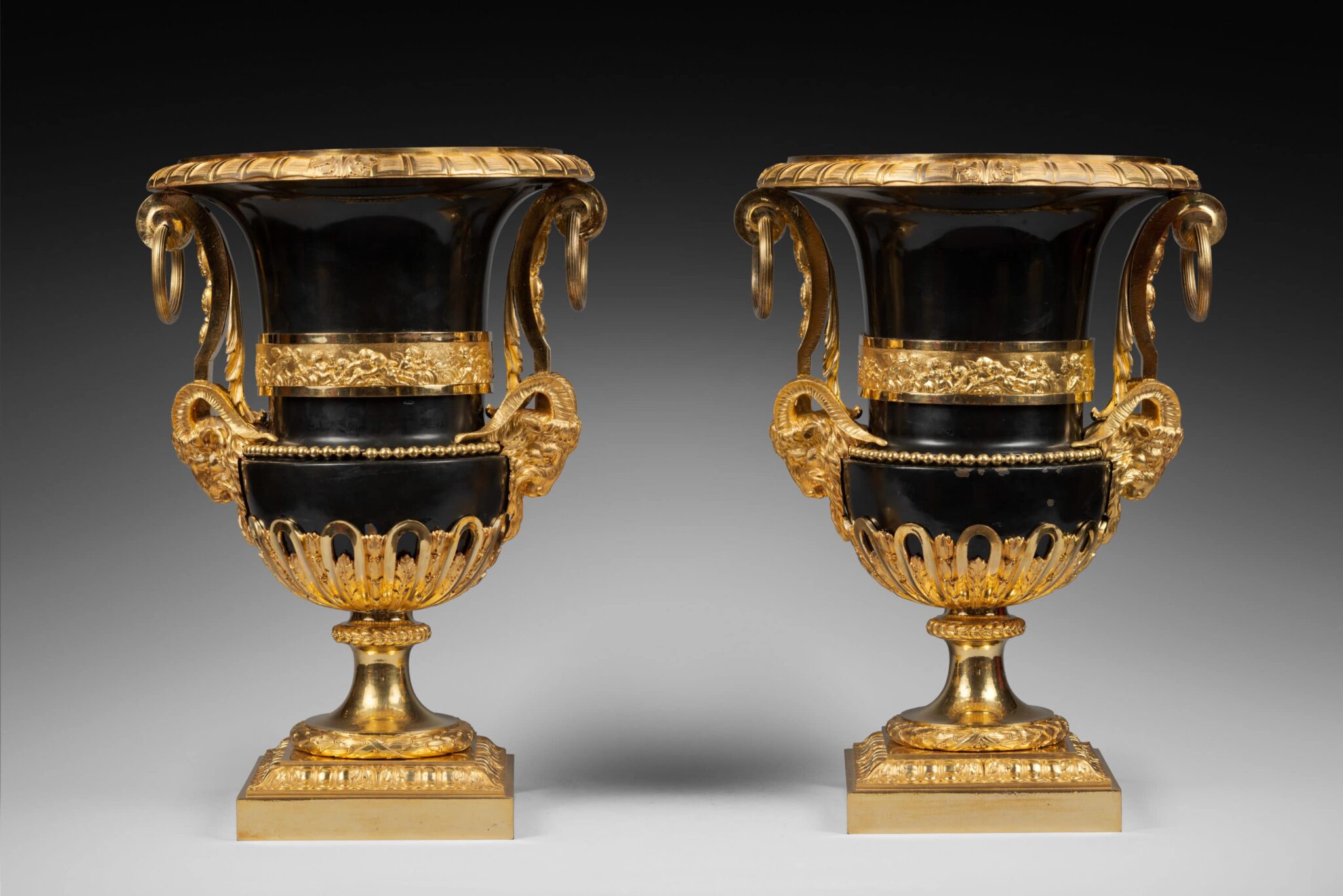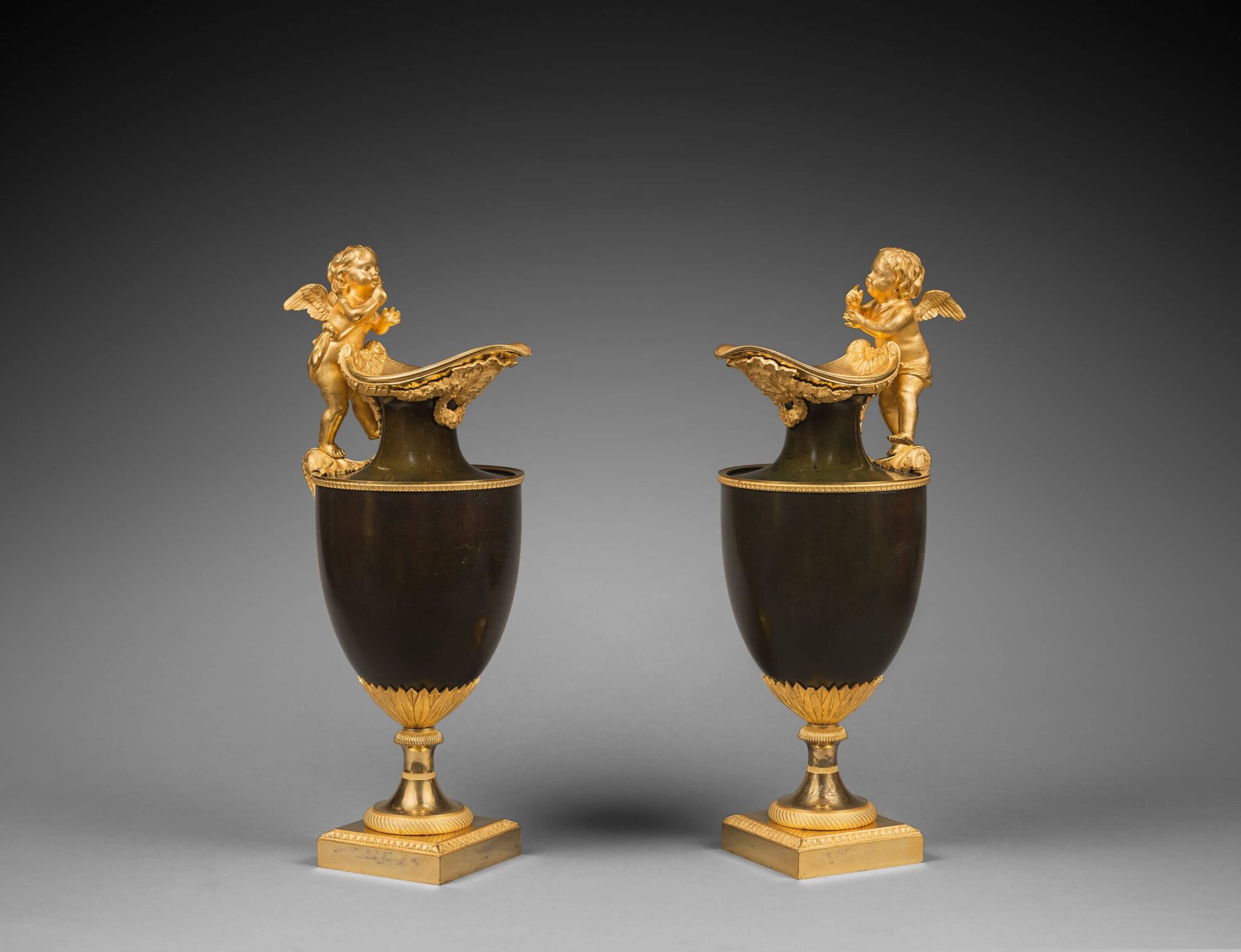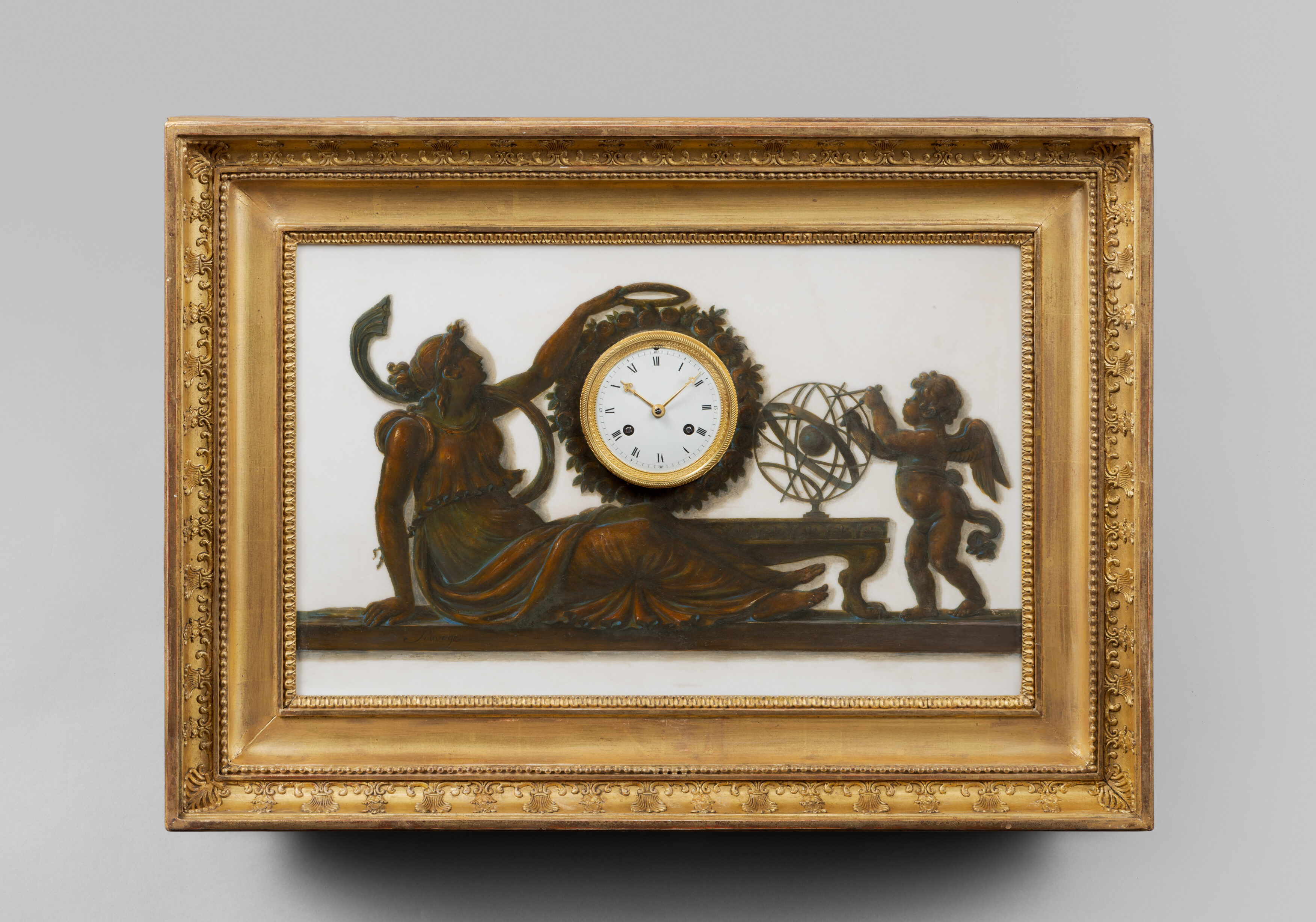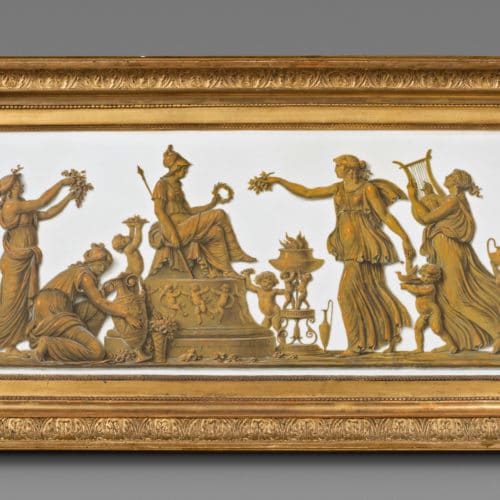Exceptional Large Rectangular Plaque in Hard-Paste Porcelain with Painted Trompe-l’œil Decoration Imitating Bronze
“The Offering to Minerva”
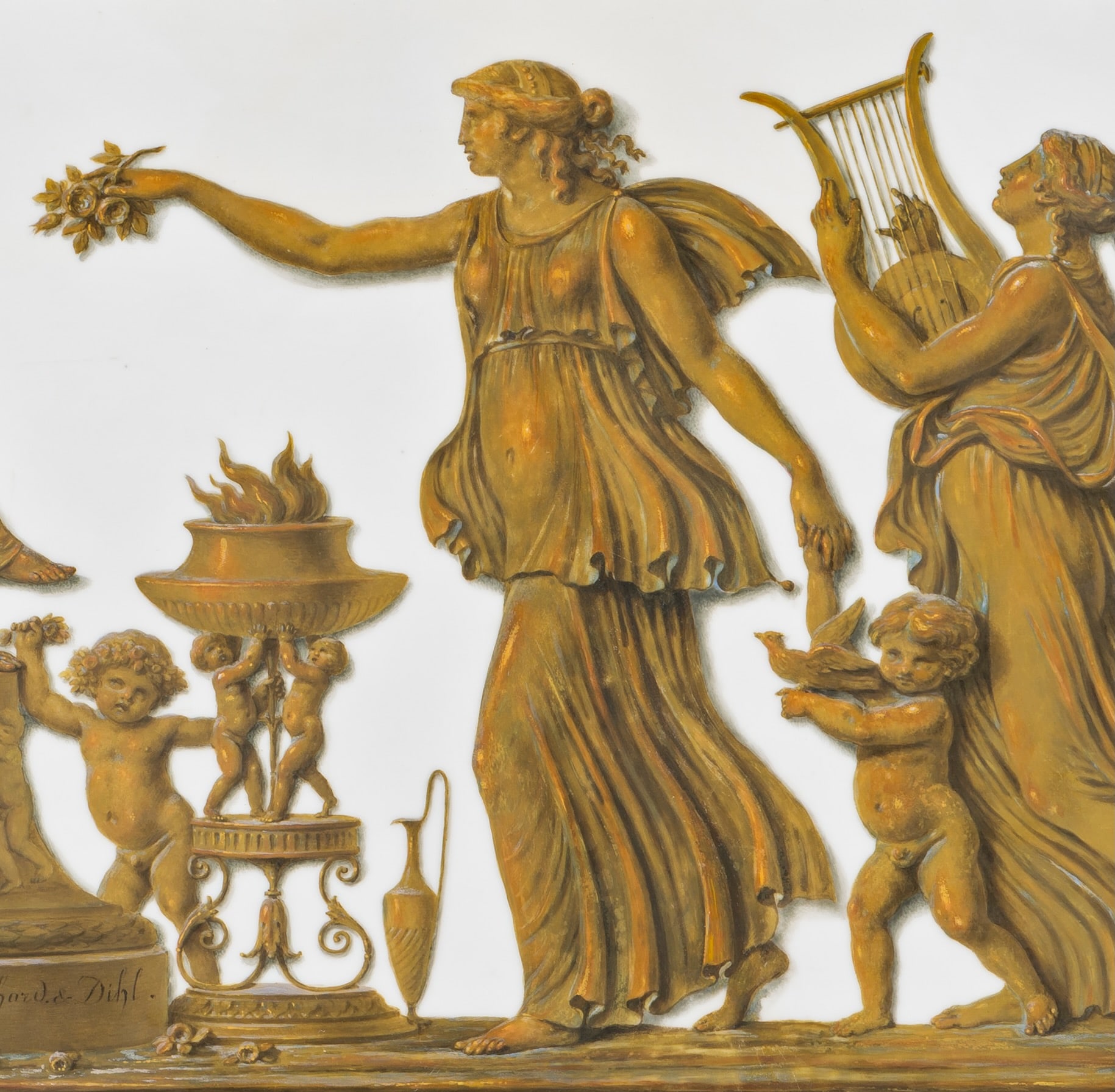
Dihl et Guérhard Manufacture, known as the Manufactory of the Duke d’Angoulême
Paris, late 18th century, 1797-1798
Signed and dated: Sauvage in.f. (invenit fecit) Manufre Guerhard & Dihl an 6
Provenance:
– Patureau collection (sold Paris, April 7, 1834, lot 37): “Sauvage (signed), Guerard and Dhill manufactory. Two pictures in the form of a frieze, representing a sacrifice to Minerva, and children at play. These two unique articles merit the full attention of connoisseurs.
-sold Paris, Maître Delestre, Hôtel Drouot, November 15, 1886, lot 31: “Two large rectangular plaques in porcelain from Guerhard and Dihl, decorated with subjects simulating bas-reliefs in bronze painted by Sauvage, representing an offering to Minerva and children’s games”.
– Hector Le Fuel collection, by descent.
Exhibition:
Probably the bas-relief imitation bronze painted on porcelain for the Dihl and Guérhard Manufactory, known as “the factory of the Duke d’Angoulême”, listed under the number 362 at the Salon of 1 thermidor year VI (July 19, 1798) at the Museum Central des Arts (today the Musée du Louvre).
This hard-paste porcelain plaque, very large in size, features a rectangular composition with magnificent trompe-l’œil decoration imitating a low-relief bronze plaque in shades of gold and brown on a white ground, meant to accentuate the impression of perspective and the volume of the figures. The scene is presented as a classical frieze with the statue of Minerva in the center; she is sitting on an altar that is decorated with a ribbon tied torus and several putti. The goddess, shown in profile, is dressed in Roman-style garb; she wears a helmet surmounted by a sphinx and holds a lance in her right hand and a laurel wreath in the other. She is an allegory of Wisdom, Peace, and the Arts. On the ground, which runs the entire length of the picture, are a wicker basket full of flowers, a few roses, a ewer whose belly is adorned with spiral fluting, a brasero with arabesque feet, and children. On either side of the figure there are nymphs, children, and putti in various positions, who are worshipping the goddess. From left to right, one putto is playing a hunting horn, a nymph is offering a flower bouquet to the statue, and a second kneeling putto is placing a vase with applied handles at the statue’s foot. A child is holding aloft a tray of fruits, while, opposite, a putto who is looking toward the viewer holds a bouquet of flowers, a nymph holds a rose in her right hand, while with her left hand she holds the hand of a child with a dove. Another nymph is playing the lyre, while behind her a putto is bending under the weight of a heavy urn it bears on its head. The picture is set in a sculpted and gilt wood frame featuring a frieze of stylized leaves and beadwork; the scene is further adorned with a waterleaf frieze.
This plaque, which is unusually large and is exceptional for the quality of its execution, may be considered one of the masterpieces of the Parisian decorative arts of its time. It also represents the height of the technical, esthetic, and decorative achievements of French manufactories. Beginning in the first half of the 18th century, they sought to compete with their German rivals, and particularly the Meissen factory. The plaque is an excellent example of the collaboration between the painter Piat-Joseph Sauvage, one of the finest artists of his time, and the Dihl and Guérhard Manufactory, which was one of the most famous and innovative of French porcelain manufactories during the period. This association of talents was responsible for some of the most beautiful painted porcelain plaques created in Paris in the final years of the 18th century and the early years of the 19th century. We know of two plaques, made by Dihl and Guérhard and signed Sauvage, that depict Minerva giving a “lesson of folly” and Venus giving a “lesson of wisdom”; they were shown at the Salon of 1800 and today are in the Musée des Beaux-Arts of Tournai. There is also a third plaque that is quite large, though slightly smaller than the present plaque, and is decorated with scenes of putti at play. It was presented at the 1797 Exhibition of the Products of Industry and is today in the Musées Royaux d’Art et d’Histoire in Brussels (see C. Froissart and J. Whitehead, “Le peintre Piat-Joseph Sauvage et la porcelain”, in Les Cahiers de Mairemont, 32-33, 2005, p. 35-39).
As concerns the present plaque specifically, it appears to have been presented by the Dihl and Guérhard Manufactory at the Salon of 1 thermidor of the year VI (July 1798) held at the Muséum Central des Arts. Among several high-quality painted porcelain plaques, there was one that represented a bas-relief imitating bronze, painted by Sauvage (n° 362, fig. 3). Though the plaque was mentioned only briefly with few details given, according to the description it may well be the present plaque, which was subsequently in the Patureau collection in April 1834, and was then offered at an anonymous sale at the Hôtel Drouot in November 1886. It eventually became part of the Hector Lefuel collection and was preserved by his descendants. At the time of the two sales in Paris, in 1834 and 1886, the plaque which formed its pendant depicted “children’s games”, and it is possible that the plaque now in Brussels, which is similar in size, may have been the pendant to the present plaque, and that the two were associated during the first few decades of the 19th century. This hypothesis seems to be corroborated by the fact that the two sales catalogues do not mention them as a pair but refer to them as “two paintings” and “two large plaques”.
Piat-Joseph Sauvage (1744 - 1818)
Was a Belgian painter, member of the Académie Royale in 1781, who became famous for his trompe-l’œil works imitating sculpture. In the 1780s, he participated in the decoration of the interiors of the royal châteaux of Rambouillet and Versailles, creating paintings on several different media, and using materials such as marble, ivory, and porcelain, and taking his inspiration from Greek and Roman antiquity and the classical vocabulary. As of 1797, he began to work with the Parisian Manufactory of Dihl and Guérhard, known as the “factory of the Duke d’Angoulême”, for in 1781 that aristocrat became its patron. He entrusted the direction of the factory to Christophe Erasmus Dihl and the Guérhard couple, who turned the factory into the main rival of the Sèvres Manufactory. The works produced by the factory with the participation of the painter Sauvage, were shown at prestigious exhibitions. Today the extant plaques made by them are extremely rare and generally to be found in prestigious French and international museums.
